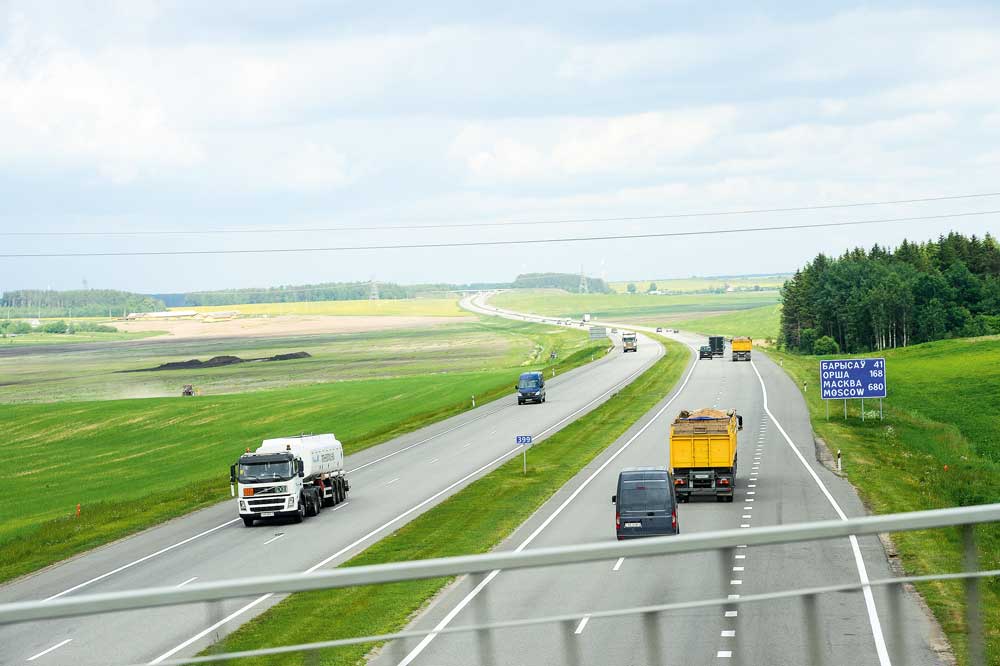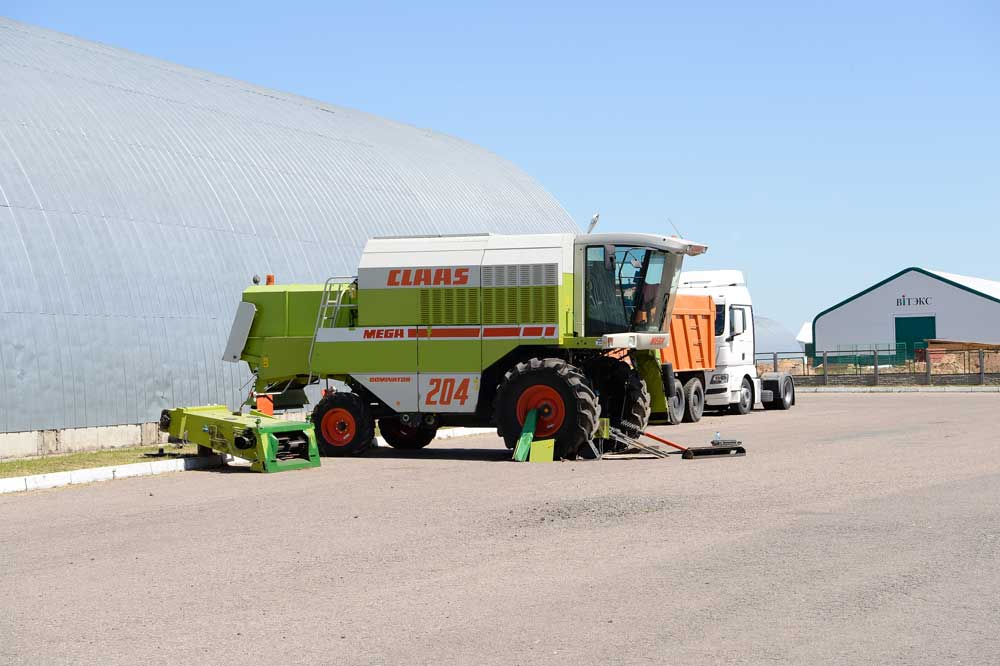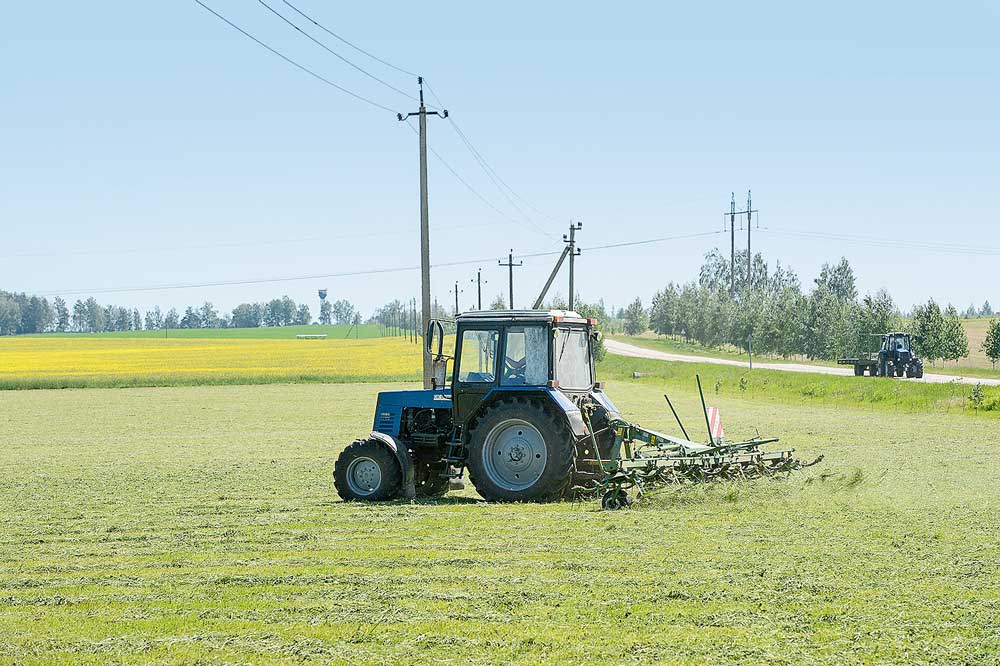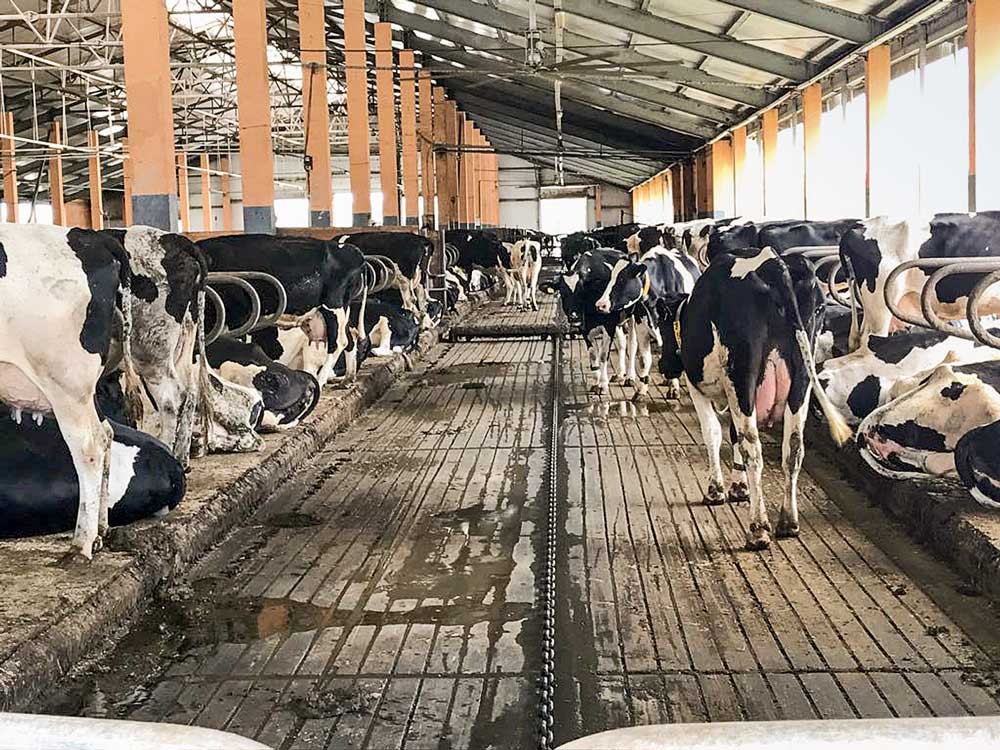Belarus: A surprise in the East
By Christoph Foth
| Bring up Belarus in conversation and plenty of preconceptions appear. For instance the talk is often of an autocratic system restricting personal freedom with socialist governance keeping life and living in a time lock around the 1990s. But travel to Belarus and you’ll experience something completely different. And the surprise will be a positive one: |
- The land gives a clean and tidy impression, not only in the capital Minsk and along the most important highways, but countrywide.
- All machinery on the farms is clean and well-maintained. There are no piles of scrap in farmyards as can be seen in Ukraine, for example.
- In the fields, every corner is cultivated and sown. All the arable land is in maximum production, an aspect that is especially different from the situation in Russia.
In Belarus the land belongs to the state
Along the lines of the old soviet system, about 90 % of the land is farmed by agricultural collectives, with only a small proportion tenanted by private farmers. The agricultural collectives give their workers individual parcels of land around the villages for growing potatoes, cabbages and pumpkins, etc. to supply their own kitchens.
Within the traditional collectives vertical integration is entrenched right through to own retail outlets on the farm, but also shops in nearby towns. There’s hardly any division between pure commodity producer and processor as found in the West.
The farm output in such cases does not comprise wheat, for instance, but rather bread, eggs, meat, milk or cheese. Naturally, this requires intensive processing on the farms. Cropping, animal production, processing and social duties continue to be amalgamated as in the old collective structure. Depending on the local conditions, planning and administration commissions control and coordinate two to four farms on a district level. Such planning commissions place tenders for inputs, including those made available from Minsk, for instance for fertiliser, seed, plant protection materials, or also for foreign exchange towards purchase of machinery from Russia or the West. The hierarchical organisation continues upwards right to the very peaks of administration in Minsk.
Belarus statistics
- Population. 9.5 million
- Arable land: 5.6 m ha
- Pasture: 3.2 m ha
- Pigs: 3 m
- Dairy cattle: 1.5 m
- Average lactation: 6500 l
- Wheat yield: 5.5 – 6.5 t/ha
- Triticale yield: 6.5 – 7 t/ha
- Sugar beet: 45 to max. 50 t/ha
- Forage maize: approx. 35 t/ha
- Exports: potash, weapons, engineering, electronic equipment (below western standards but robust and very suitable for Africa and India), dairy products.
Too much poor land
Describing the climate in Belarus needs just a single sentence:
The autumn is wet, spring cold and summer dry.
The soils differentiate a little more: head west towards the Lithuania or the borders to Ukraine and you’ll find areas of good farmland. Turn eastwards and the fields are sandy.
Between 60 and 70 % of soils can be cropped, the rest is pasture, often peat or fenland.
Belarus cash movement is completely different from that in the West
Whereas in Russia or Ukraine prepayment is more the way, or in the West per invoice with comparatively short due dates, payments in Belarus feature what we would regard as extremely long due dates (up to 180 days). What therefore happens is that the sums involved are applied in further trading, purchases and sales. Thus, only very little hard cash actually changes hands. Liquid currency is scarce. Foreign exchange is available only via allocations from central government per request from a planning commission. A financial framework like this means Belarus cannot integrate easily in international markets, emphasising the impression of an insular system where any purchase requirements are naturally sought on the domestic market first. This fits well with agriculture because Belarus is one of the biggest producers of farm machinery in Eastern Europe. Additionally, the country has huge reserves of potash and also manufactures nitrogen fertiliser.
Corruption is as good as non-existent
A further advantage is important, especially for Eastern Europe: less available liquid cash means no corruption, at any rate no discernible palm smearing. All cash flows from Minsk and flows back there again. Nor does it then disappear into the pockets of a few super rich. This is in complete contrast to Ukraine or Russia, where the main cities live at the expense of the hinterlands and nothing is invested in rural areas. In Belarus, on the other hand, even outlying road networks are in very good condition and well cared for. New hospitals and schools are built and continuously maintained, not only in Brest or Minsk, but also in the smaller towns and villages. In the same way, there are plenty of well-developed sports stadia, velodromes and ice rinks (ice hockey being a national sport) and swimming pools too. Social requirements are covered 100 % by the state. Health and ambulance/rescue services and school buses that collect every child in the furthest rural corners, one can speak almost of exemplary socialism.
In general, houses and flats are also state owned, although in special suburbs around Minsk and other large population centres, private homes are being developed. Incomes on average are about a third of those in the West. Internet access, telephones, new cars, tablets or mobile ‘phones – all exist and are available not only in the big cities, but also out on the land. The costs of energy and rent are very reasonable.
This means Belarus citizens are content, also in the villages. Cheap energy in a land that has limited oil or gas naturally means dependence, in this case on Moscow. Through cost-effective deliveries of energy, Russia ensures a secure alliance on its western borders that also serves as buffer between it and EU and NATO lands. This is the political price for a relatively high standard of living. Additionally, the Chinese are increasingly active in Belarus, seeing this country as a gateway to Western Europe for its planned silk road. One can experience this even now when landing at Minsk airport where public announcements are in Russian, English…..and now Chinese.
Only western technology is missed
Basically, farms have access to all machinery, seed, plant protection materials and fertilisers. Foreign seed is also available although imports require a licence. The authorities in Minsk ask farms to apply for such imports. This restricts imports to a certain extent with the consequence that farms order more, knowing that what they might get in the end might cover their initial requirements. In other words, to get 80 % of a required import, 125 % of requirement might be ordered.
The farms themselves produce very efficiently overall. Naturally this depends, as in every other business, on who’s in charge. But the businesses tend to be structured for efficiency. The unit of measurement in crop production is not, for instance, t/ha of wheat but instead an amount based on feed requirement, or the requirement of the farm bakery. The end product, not an intermediate crop, is fundamental to organisation. In other words, the milk, meat or pasta sales. On the other hand, productivity in the individual sectors could indeed be higher. But this is compensated for by the state being in the position to manage the output. The efficiency losses compared with specialised production with its cash flow advantages stand against the advantages of smoother marketing through the state. In Belarus, no farm has to seek a market, and none has to fear marketing risk.
Machinery from Belarus preferred
The maxim applied in the planning commissions is: Buy first in Belarus, then abroad. For this reason, western machinery is normally only to be found where there’s nothing similar to be found in Belarus (e.g. tractors over 250 HP). All the same, western technology is very much admired and has a good reputation. However, such machinery is around 40 % more expensive than in the land of production due to import tariffs and transport costs.
- Disadvantage: Access to technical progress takes place only slowly because of scarce foreign currency and cash supply.
- Advantage: Because of poor spare parts availability, the domestic machinery is well cared for, lasts longer (and is thus cheaper). And the available capital remains in the country.
Education: a core problem
Despite the state-guaranteed good living standard for everyone, Belarus remains a two-class society with manual workers and those in »white collar« professions. Hereby, education standard for the workers is fairly poor while the professional classes are theoretically well educated. In agriculture, this means administration is by academics who regard themselves as higher up the social scale and who cannot, or will not, apply hands-on management, but tend to give their orders out of the car window. The young agronomist with a career path ahead to leading agronomist and finally to chief agronomist (titles play a great role here) that actually climbs onto a tractor for a practical view of things, tends to be the exception.
Because of this attitude, there’s a lack of efficient direction in machinery use, for instance in optimising wagon loading during the silage harvest or manoeuvres in the field. In short, the eye for input and results is missing, with associated cropping errors. Theory and practice are not intermeshed. Detail might be taken care of, but not the overall picture, a catastrophe in terms of economic and business efficiency.
The same goes for livestock production. Here’s an example: The milker thinks only about the milk. If the feeding is right, or whether a problem with the milk may have something to do with the feed, is of no interest. The feeder only ensures that enough feed lands in the trough. Does the cow actually eat the ration? Or is the feed mixture the right one for the lactation? The vet pays attention only to cows that are ill. Management and preventative actions are of no concern. In the barn, or out of the field, a mistake or a failure is all too happily blamed on poor machinery. Taking care of problems, or changing strategies, is not considered: a frame of mind that could become the country’s greatest problem.
Private farmers are better organised
Privately run businesses make up 10 % of Belarus farms. But these are not peasant-style units. Quite the contrary, with farms running from 1,000 to 7,000 ha. Furthermore, the managers here have abilities completely different from those on the collectives. These private farms are also mainly to be found on the better soils: the lands along the border to Russia (where numerous Russians have settled down). They orient their management along western lines and produce commodities for further processing with no, or very little, vertical integration into further processing.






